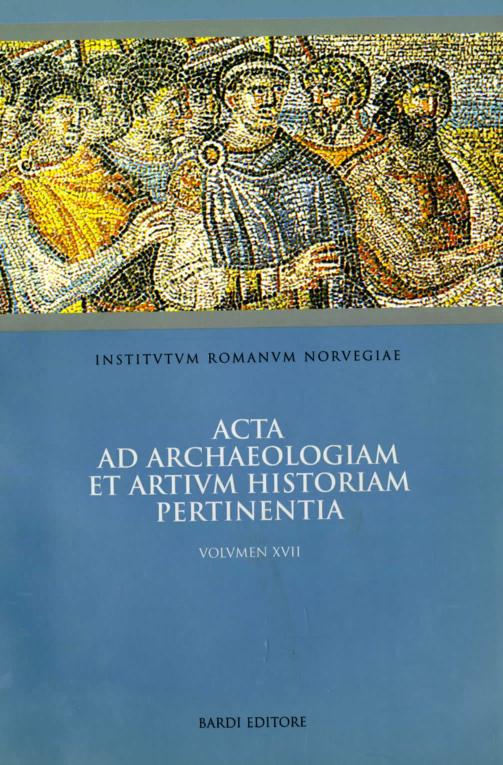The Water-Supply of Rome from Late Antiquity to the Early Middle Ages
DOI:
https://doi.org/10.5617/acta.5696Abstract
The article collates the textual and archaeological evidence for Rome’s water-supply in the period c.300-1000. Whilst there is now sufficient archaeological evidence for the rebuilding of the city’s aqueducts after the Gothic Wars, it is clear that the uses to which the water was put in the middle ages were very different from those of Late Antiquity. There was a massive scaling-down of the overall system, with the thermae falling immediately out of use, to be replaced to a certain extent by church baths for the clergy and poor. The Janiculum mills were maintained, and smaller watermills continued to function off the aqueducts, as well as from the Tiber. Baptisteries used both aqueduct and non-aqueduct-supplied water. There was an extensive network of wells and subterranean conduits utilizing ground-water. The system as a whole was organized centrally, by the Church – although the extent of private patronage (wells, smallscale mills and domestic baths) should not be overlooked.
How to Cite
Issue
Section
License

This work is licensed under a Creative Commons Attribution-NonCommercial 4.0 International License.
Authors who publish with this journal agree to the following terms:
- Authors retain copyright and grant the journal right of first publication with the work simultaneously licensed under a Creative Commons Attribution License that allows others to share the work with an acknowledgment of the work's authorship and initial publication in this journal.
- Authors are able to enter into separate, additional contractual arrangements for the non-exclusive distribution of the journal's published version of the work (e.g., post it to an institutional repository or publish it in a book), with an acknowledgement of its initial publication in this journal.
- Authors are permitted and encouraged to post their work online (e.g., in institutional repositories or on their website) prior to and during the submission process, as it can lead to productive exchanges, as well as earlier and greater citation of published work (See The Effect of Open Access).





